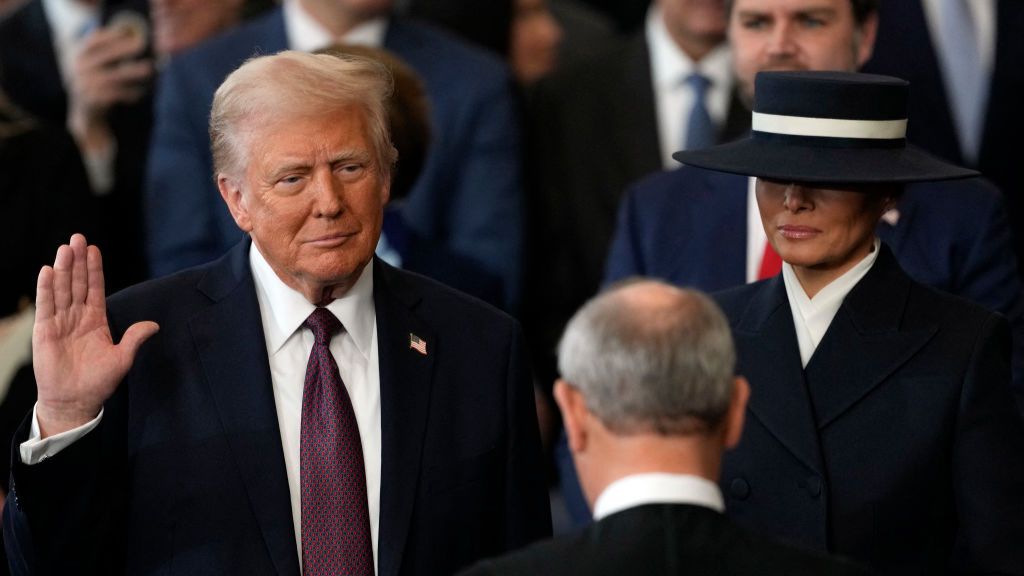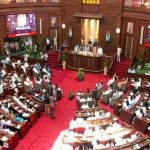Introduction: The significance of a president’s first day in office
The first day in office for any president is a momentous occasion, setting the tone for their administration and igniting discussions across the nation. Donald Trump’s Day-One Executive Orders did just that, sending ripples through various sectors of American life. These initial actions not only reflect his priorities but also signal significant changes in America’s political landscape. As citizens tuned in, eager to understand what Trump executive actions would mean for them, it became clear that this was more than just ceremonial paperwork—it was a bold declaration of intent. Let’s dive into the executive orders unleashed on that pivotal day and explore their implications for America moving forward.
Overview of Donald Trump’s executive orders on his first day
On his first day in office, Donald Trump signed a flurry of executive orders that signaled an aggressive shift in U.S policy. Each action was designed to fulfill key campaign promises and set the tone for his administration.
One of the most notable moves was aimed at repealing parts of the Affordable Care Act. This immediate step demonstrated Trump’s commitment to reshaping healthcare in America. He also took decisive action on immigration by advancing plans for stronger border security, including efforts to construct a wall along the southern border. Environmental regulations were not spared either; Trump sought to roll back measures seen as burdensome by many businesses. These early executive actions sparked discussions and debates across various sectors, highlighting how one president’s vision can rapidly alter America’s political landscape.
Implications for immigration policy and border security
Donald Trump’s Day-One Executive Orders set the stage for a seismic shift in U.S immigration policy. His administration made clear that border security would be a top priority from day one.
One of the most significant actions was aimed at reinforcing existing borders and tightening immigration enforcement. This meant more resources allocated to border patrol and enhanced measures to prevent illegal crossings. The executive orders also signaled a push against sanctuary cities, threatening federal funding for jurisdictions that shield undocumented immigrants. Such moves sparked debates about local autonomy versus federal authority.
Furthermore, Trump’s commitment to constructing a wall along the southern border dominated headlines, symbolizing his hardline stance on immigration. The implications were immediate—heightened tensions arose between communities advocating for immigrant rights and those supporting stricter policies. This dramatic pivot left many questioning what America’s identity as a nation of immigrants truly means under this new administration’s approach.
Impact on healthcare and the Affordable Care Act
One of Donald Trump’s first actions on his first day was aimed squarely at the Affordable Care Act (ACA). This landmark legislation had been a cornerstone of Obama’s presidency, providing millions with health coverage. Trump’s executive order signaled a shift toward dismantling parts of this program. The goal was clear: reduce what he deemed burdensome regulations that hindered healthcare providers and businesses.
By encouraging states to seek waivers from ACA mandates, the Trump administration sought to create greater flexibility in their healthcare systems. Critics worried this would lead to increased premiums and fewer covered services for vulnerable populations. Supporters argued it could foster innovation in how care is delivered. As discussions around America policy changes intensified, many watched closely—curious about the real-world implications these decisions would have on millions of Americans’ access to essential health services.
Effects on environmental regulations and energy policies
Donald Trump’s Day-One executive orders marked a significant shift in environmental regulations and energy policies. The new administration immediately prioritized deregulation, aiming to eliminate restrictions that were deemed burdensome for businesses.
One of the key focuses was on fossil fuels. Trump emphasized reviving industries like coal and oil, which had struggled under previous regulations. This move aimed to boost job creation in these sectors while reducing reliance on renewable energy initiatives. Additionally, the rollback of environmental protections raised concerns among environmentalists and scientists. Critics argued that such actions could exacerbate climate change and threaten ecosystems across the nation.
The pivot toward traditional energy sources highlighted a stark contrast with earlier administrations focused on sustainable practices. As debates raged over the balance between economic growth and environmental responsibility, many watched closely to see how these changes would unfold over time.
Discussion on foreign relations and trade deals
Donald Trump’s approach to foreign relations was marked by a distinct shift from traditional diplomacy. On his first day, he emphasized an “America First” strategy that aimed to redefine U.S interactions on the global stage.
One of the immediate actions involved withdrawing from multi-national trade agreements seen as unfavorable. This decision sent ripples through international markets and put allies on notice.Trade deals were scrutinized for their impacts on American jobs and industries. The administration signaled readiness to renegotiate existing terms, which raised concerns in many sectors reliant on stable trade relationships.
Trump’s stance often polarized opinions—some praised it for protecting American interests while others warned of potential isolationism. The future of these policies could reshape not only economic ties but also geopolitical alliances worldwide.
Analysis of the potential economic impact of these orders
Donald Trump’s Day-One Executive Orders set the stage for significant economic shifts. These directives signal a move toward deregulation, which could invigorate industries like oil and gas. Businesses often thrive in less restrictive environments. On the flip side, cutting regulations might create short-term gains but can lead to long-term consequences. Environmental degradation is a risk that could incur costly clean-up efforts down the line. Trade policies also play a crucial role in shaping market dynamics. With renegotiated deals or tariffs, some sectors may flourish while others struggle under increased costs.
Investors keep a close eye on these changes. The stock market typically reacts swiftly to policy announcements, reflecting confidence or concern about future growth prospects. How these executive orders influence job creation and wage levels remains uncertain as businesses adapt to new rules and regulations.
Reactions from politicians, experts, and the public
The reactions to Donald Trump’s Day-One Executive Orders were swift and varied. Politicians from both sides of the aisle voiced their opinions almost immediately. Supporters praised the bold moves as necessary actions to fulfill campaign promises.
Conversely, many Democrats criticized the orders, labeling them reckless and divisive. They expressed concern over potential long-term impacts on vulnerable communities.Experts weighed in with mixed assessments. Some hailed his aggressive approach as a much-needed change in U.S politics, while others warned that it could lead to instability or legal challenges down the road. Public sentiment mirrored this division. Social media erupted with hashtags supporting or denouncing Trump executive actions just hours after they were announced.
As discussions unfolded, town halls became arenas for heated debates about America policy changes and their implications for everyday citizens. The nation’s response highlighted deep-seated divisions yet also a shared curiosity about what comes next under Trump’s administration.
Comparison to past presidents
Donald Trump’s Day-One Executive Orders stand out in the landscape of U.S. politics, particularly when compared to his predecessors. Historically, first-day actions set a tone for the administration and signal priorities.
Barack Obama emphasized healthcare reform with executive orders focused on expanding access to insurance through the Affordable Care Act. George W. Bush took immediate action post-9/11, prioritizing national security and defense initiatives. Trump’s approach was more aggressive and controversial from the outset, reflecting his campaign promises centered around immigration and deregulation. He made bold moves on border security that were divisive yet consistent with his messaging throughout his presidency. Additionally, Lyndon B. Johnson utilized early executive actions to push civil rights legislation forward as part of a broader Great Society agenda; Trump’s focus was narrower but aimed at delivering rapid change aligned with Republican ideals.
Each president has their own style when it comes to wielding this powerful tool, but Trump’s Day-One Executive Orders marked a stark departure from norms established by previous administrations—highlighting just how significantly he aimed to reshape America’s policy landscape right from day one.






